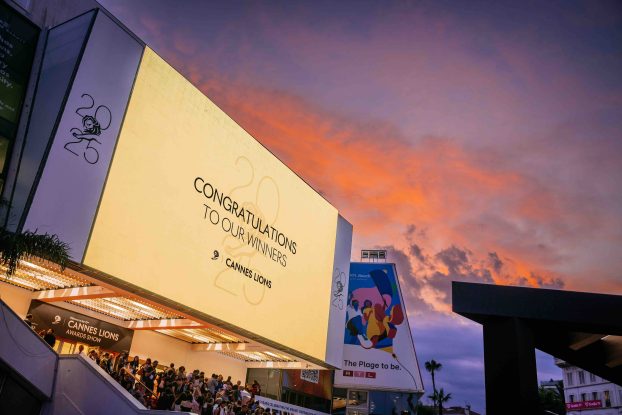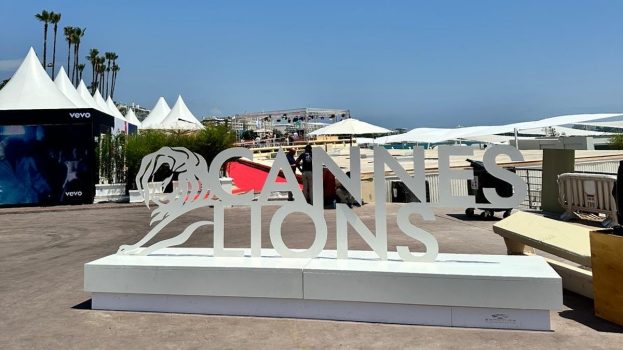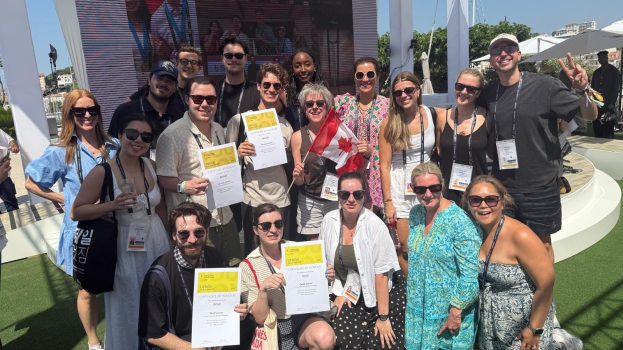There are at least several hundred ways to say that a hair care product locks in colour. Zak Mroueh should know: He considered and rejected most of them in the process of developing a print execution for Salon Selectives Colour Shield.
‘We had some ideas that came out of our TV work, which has been running for a while,’ says Mroueh, associate creative director with Toronto-based TAXI Advertising & Design, and copywriter on the assignment (Gord Marshall was the art director). ‘We had ideas that got into aspects of the target group’s lifestyle, like boyfriends and relationships, and so on. We were trying to define a fresh way of saying this.’
Their solution was, in the end, almost ingenious in its sheer, blatant obviousness: To get across the notion that the product locks in hair colour, the ad used the image of a padlock. Made of hair.
The Salon Selectives print execution began running this winter – not just in fashion and beauty magazines, as one might expect, but in Toronto alternative weekly newspaper Now as well.
As a newspaper ad, it stands in sharp contrast to the kind of work readers are used to seeing. In a medium dominated by headline- and copy-driven advertising, the Salon Selectives piece is almost purely visual. Aside from the three-word headline (‘Locks in colour’) and the product name, there’s virtually no text to be found on the page.
‘When I saw it in the paper, I went, ‘Holy shit, this really pops,” Mroueh says. ‘Newspaper is wall-to-wall copy, and that’s part of the reason this ad stands out.’
The dearth of strong, visually-driven advertising in newspaper is somewhat perplexing. As just about any creative will tell you, a full page in a broadsheet is a gloriously expansive canvas on which to work. So why do so many advertisers keep painting the same drab pictures?
The best newspaper ads do tend to be highly visual, says Trevor McConnell, vice-president, creative director with Vancouver-based Palmer Jarvis DDB. Too often, however, advertisers and their agencies overlook newspaper’s visual potential, using it instead to communicate a lot of supplementary information that can’t be accommodated by other media.
‘Newspapers are regarded as the junkyard of the ad business,’ he says. ‘There’s only so much that can be said in a 30-second television commercial or a magazine ad, and the agency will defend the purity of those media to the death. They’ll tell the client, ‘All of that other stuff you want to say, we can cover off in newspapers.”
John Farquhar, executive vice-president and co-creative director with Toronto-based Young & Rubicam, agrees. ‘There’s a tendency to be a bit lazy with newspaper. We understand that there’s only so much stuff that can go into a TV or radio commercial. But if I have a full page in newspaper, the assumption seems to be that I can toss in everything and the giant clam.’
True, newspaper is a text-driven medium. But it doesn’t necessarily follow that newspaper advertising should be text-driven as well.
‘There’s a tendency for clients to assume that the general public cares about their product a lot more than they really do,’ says Ian Grais, one of the principals of Vancouver-based Rethink. ‘And because of that, they assume that if you put a ton of copy into newspaper, people will be interested in reading it. But I’m skeptical about that. If you can get across one idea in newspaper, you’ve accomplished more than you could with a copy-heavy ad that won’t get read.’
Grais says some of the newspaper advertising that makes him proudest is work done at his former agency, Palmer Jarvis DDB, for the Vancouver-area amusement park Playland. (The account has since moved to Rethink.) Because there wasn’t the budget to do a separate newspaper campaign, he says, the ads were simply adapted from the outdoor creative – an approach that proved remarkably successful.
‘We found that outdoor creative works really well in newspaper,’ he says. ‘It’s much more simple and visual.’
Probably the best reason to consider a visual approach in newspaper, Grais adds, is the fact that so few other advertisers are doing it.
‘If you’re looking at wall-to-wall copy all around you, then all the more reason to break away from that,’ agrees Karen Howe, creative director with Toronto-based Due North Communications.
Zak Mroueh, for his part, says that newspaper advertisers should be looking closely at their strategies, and asking themselves whether they are as focused as they could be.
‘Sometimes strategies are too complicated,’ he says. ‘And so you’ll have people trying to solve it through the long-copy, headline-driven approach. Because it’s too hard to say it in a visual way.’
There are, of course, certain practical considerations that also limit the use of newspaper as a visual medium. As Michael McLaughlin, executive vice-president and joint chief creative officer with BBDO Canada points out, a lot of newspaper work tends to involve fairly tight turnaround times, which leaves little opportunity to develop original photography or illustration.
Then there’s the longstanding reputation that the medium has for delivering poor reproduction quality.
‘Every creative team I know has been burned by newspaper reproduction at some point in their career,’ John Farquhar says. ‘You run the blue ad, it comes out green and you have very unhappy clients. Old hurts like that die hard, and it takes a while for people to get over it.’
Things are, however, beginning to change. While there is by no means consistency throughout the industry, the consensus is that dailies have gone a long way toward improving reproduction. And as quality increases, so too should the confidence of advertisers.
‘Reproduction has come so far forward from where it was even five years ago,’ Karen Howe says. ‘We have to shake off the feeling that newspaper is this backwater of advertising. It can be an incredibly powerful medium.’
Also in this report:
– Launch of Post good news for advertisers: Upstart daily has jump-started the industry, prompting offers of better rates, bonus ads and new loyalty programs p.NP3
– Stop the presses: Dailies are changing: No longer acting as simple order-takers p.NP4
– Telcos reward readers with a laugh: MTT and Bell Mobility employ unusual formats to nab attention p.NP6
– Savingumoney.com builds awareness offline: Coupon portal uses newspapers as linchpin of media strategy p.NP7
– Cadillac takes the long view: Used frequency of newspaper creatively by telling a different story every week p.NP10
– Edmonton Journal: Time for a change: Daily goes for a facelift p.NP10
– Whistler taps fast turnaround times: Newspaper lets ski resort react quickly to changing circumstances p.NP13
– Talvest co-brands funds with FP Index: Helped Montreal financial services provider to crack Ontario market p.NP14



























